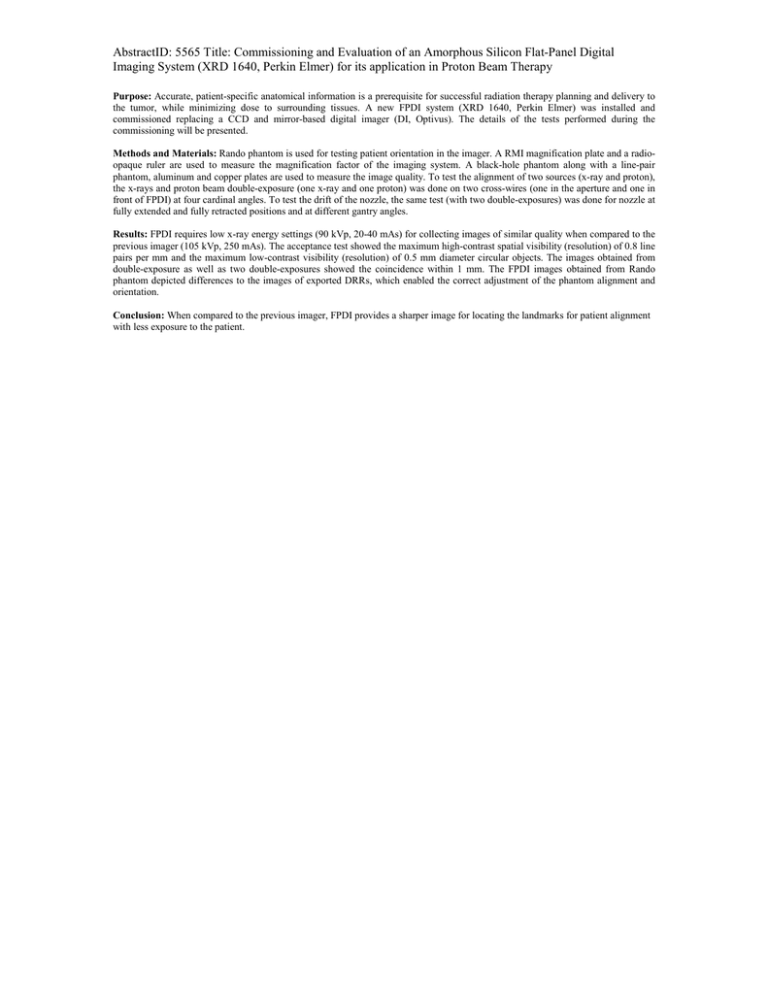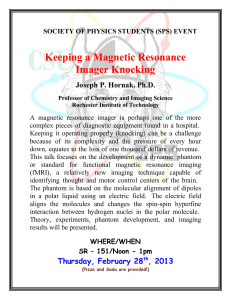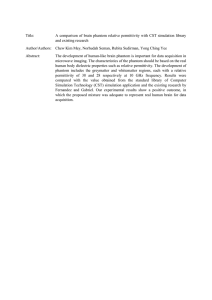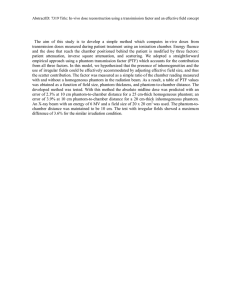AbstractID: 5565 Title: Commissioning and Evaluation of an Amorphous Silicon... Imaging System (XRD 1640, Perkin Elmer) for its application in...
advertisement

AbstractID: 5565 Title: Commissioning and Evaluation of an Amorphous Silicon Flat-Panel Digital Imaging System (XRD 1640, Perkin Elmer) for its application in Proton Beam Therapy Purpose: Accurate, patient-specific anatomical information is a prerequisite for successful radiation therapy planning and delivery to the tumor, while minimizing dose to surrounding tissues. A new FPDI system (XRD 1640, Perkin Elmer) was installed and commissioned replacing a CCD and mirror-based digital imager (DI, Optivus). The details of the tests performed during the commissioning will be presented. Methods and Materials: Rando phantom is used for testing patient orientation in the imager. A RMI magnification plate and a radioopaque ruler are used to measure the magnification factor of the imaging system. A black-hole phantom along with a line-pair phantom, aluminum and copper plates are used to measure the image quality. To test the alignment of two sources (x-ray and proton), the x-rays and proton beam double-exposure (one x-ray and one proton) was done on two cross-wires (one in the aperture and one in front of FPDI) at four cardinal angles. To test the drift of the nozzle, the same test (with two double-exposures) was done for nozzle at fully extended and fully retracted positions and at different gantry angles. Results: FPDI requires low x-ray energy settings (90 kVp, 20-40 mAs) for collecting images of similar quality when compared to the previous imager (105 kVp, 250 mAs). The acceptance test showed the maximum high-contrast spatial visibility (resolution) of 0.8 line pairs per mm and the maximum low-contrast visibility (resolution) of 0.5 mm diameter circular objects. The images obtained from double-exposure as well as two double-exposures showed the coincidence within 1 mm. The FPDI images obtained from Rando phantom depicted differences to the images of exported DRRs, which enabled the correct adjustment of the phantom alignment and orientation. Conclusion: When compared to the previous imager, FPDI provides a sharper image for locating the landmarks for patient alignment with less exposure to the patient.




